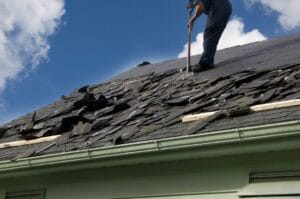There are many different types of roof vents. If you’re not sure which type to use or if you want a custom-made vent, we can help.
Soffit Vents

Soffit vents are usually installed on the underside of the roof, where they can be accessed through apertures in your soffit. They’re shaped like rectangles and made of aluminum. Soffit vents are used to ventilate attic spaces but can also be used with gable vents.
The shape and size of your soffit vent will depend on what type of roofing material you have installed on your home’s exterior—wood shingles, clay tiles, or standing seam steel—as well as how much space there is for ventilation in that area. If there isn’t enough room for a full-sized rectangular soffit vent in an existing opening at head height (where the roof meets walls), consider installing two smaller ones instead; this way each one takes up less space than if it were all one big unit would do anyway!
Ridge Vents

Ridge vents are the most common type of roof vent. They’re installed on the ridge of your roof and are often made of metal or plastic. The vent can be either round or rectangular, with some designs having a curved edge instead of an opening to insert a fan.
The purpose of these vents is to allow air to flow from one side to another without letting water into your house or attic space through any leaks near where they’re installed on roofs (or in places where there might be leaks). The main advantage these types of off-center exhaust fans have over other kinds like louvers is that they don’t require access above ground level—you drill holes through walls into chimneys or crawlspaces so you can install them there instead!
Cupola Vents

Cupola vents are a type of roof vent. They work to ventilate the attic and keep your home cool, dry and comfortable. These vents are usually found on older homes, but they can also be used to replace traditional attic fans in newer construction.
There are many different types of cupola vents; some have louvers that open inward while others have louvers that open outward so you can control how much air gets pulled into your home through them. The most common way to install a cupola vent is by installing it into an existing opening in the roof where there’s already an existing gable end (ends perpendicular) or ridge cap (ends parallel).
Roof Turbine Vents

Turbine vents are the most common type of roof vent. They’re easy to install, easy to clean, and durable. Plus, they have some great benefits:
- Turbine vents are energy efficient because they prevent heat loss from your home through evaporation or convection (the movement of hot air away from your home).
- They also reduce cooling costs because they allow you to use less energy by keeping cool air inside during hot weather conditions.
There are different ways to ventilate your roof.
- Ventilation type: The first thing you should know is the type of ventilation installed on your home’s roof. There are many options, including thatch and rubber membrane vents, which allow air to move through a building without letting water in or out.
- How it works: All types of ventilators work in one way or another by sucking air into a room through openings at the top and pushing stale or polluted air out through openings at the bottom (or vice versa). This movement allows fresh air from outside into rooms where heaters need it most—such as bathrooms, kitchens, and laundry rooms—while removing stale odors from those same spaces before they escape out those same openings.
In this article, we’ve outlined the different types of roof vents and how they operate. We’ve also shown you why it’s important to choose one that meets your needs, considering things like size and style.
To receive your customized price FOR FREE for a new roof vent installation, a new roof, or roof repairs, CONTACT US as soon as possible. Any roofing issues can be solved by our team of professionals at any time!




